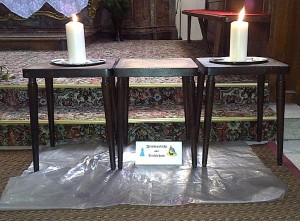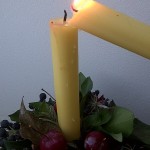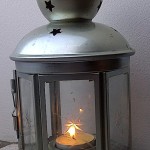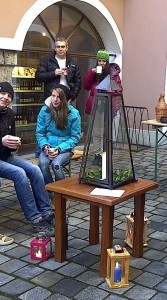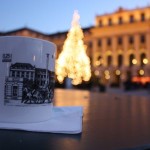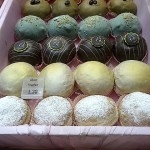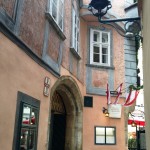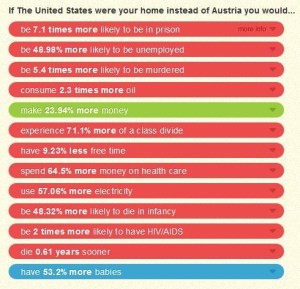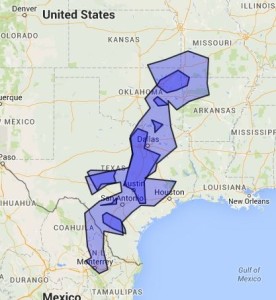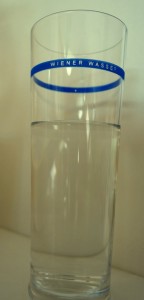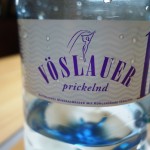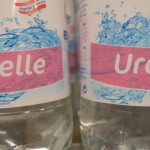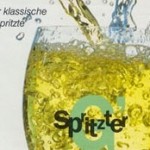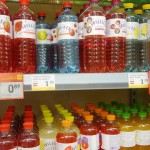ILLUMINATING YOUR CHRISTMAS CELEBRATION WITH A FLAME FROM JESUS’ BIRTHPLACE – THE LIGHT OF PEACE / FRIEDENSLICHT
A MODERN CHRISTMAS TRADITION ORIGINATING FROM AUSTRIA AND SPREADING THROUGHOUT THE WORLD
“I am the light of the world. Whoever follows me will not walk in darkness, but will have the light of life.” John 8:12, Bible
One of my fondest memories of growing up in a small town in Pennsylvania was the Christmas Eve service at the local church. Some years my parents and I would volunteer to set up the luminaries in the church parking lot before the service. Luminaries are nothing more than small paper lunch bags filled about a quarter of the way with sand to weigh them down and hold a candle that is placed in the center. The luminaries were placed along the sidewalks leading up to the church to form a procession of lights – like the North Star leading the way into the church. At the entrance greeters welcomed you to the service with a hand shake and white candle complete with a cardboard ring to protect your hand from dripping wax.
In my memory, the entire service was conducted by candlelight but in reality, I think that it was probably toward the end of the service that the lights were turned off. The church fell silent as each light was distinguished and church elders moved from pew to pew lighting the end row member’s candle who then passed on the light to the other church members in the row. At the very end of the service, we all sang “Silent Night” a cappella by candle light. The significance of one flame illuminating the entire sanctuary was not lost on me, not even as a young child and contributing to the warmth of candles and the anticipation of presents sure to come was an awesome feeling of oneness with everyone around me and with it a deep sense of inner peace.
When you move abroad, or simply find yourself far away from loved ones during the holidays, tis-the-season can accentuate all the more your aloneness, making this time of year quite challenging. Fortunately for me, Austria is world class when it comes to conveying Christmas in its Ur-sense. Or at least what I think that must be.
Besides the shops and just about everything else being closed from noon on Christmas Eve until midnight on December 27, and not Santa baby but the Christkind (Christ child) bringing the presents here, and this being the birth place of that soul-piercing carol “Silent Night”, many of Austria’s holidays traditions are illuminated by candlelight. And there’s something about candlelight – the dancing shadows cast on walls, the sweet wax smell, the softening of voice levels to intimate whispers – that soothes the soul.
At the beginning of advent, advent wreaths are sold at every market and most grocery stores and each week, another candle is lit. Traditional Christmas figures carved in wood are surrounded by candles and the rising heat from the flames turn the wooden propeller on top. Candles adorn Christmas tree branches and on Christmas eve, the ringing of a small bell summons the children to the candle lit tree (which has been brought and decorated by the Christ child) where the family gathers around to sing Christmas carols and exchange presents.
But one of the traditions I love the very most is a relatively new one (started in 1986)– and this is the tradition of lighting all the candles of the home on Christmas Eve from a single flame from Bethlehem — the Light of Peace (more also in a previous post). How fitting that the tradition of the Light of Peace started in Upper Austria – the same place that Silent Night was penned. The Light of Peace stems from a candle burning in the Church of the Nativity in Bethlehem, the cave-manger site traditionally venerated as the birthplace of Jesus. Every year at the end of November, the flame is brought to Austria by a child specially selected for the task. This year, due to the current turmoil in the region, a 9-year-old girl, Ihab Msleh, who comes from an Arabic-Christian family in Bethlehem, lit the candle that was then transported back to Vienna on an Austrian Airlines flight into the care of 10-year-old Niklas Dumhart from St. Georgen an der Gusen. It’s Niklas’ job to spread the light throughout Austria and even other parts of Europe. So far, this year’s Light of Peace has been shared with all of Austria, 30 European countries, many parts of the US (so glad to see Texas now joining in, if only Florida and NC could get on board), some parts of South America and many other places throughout the world. On December 16, Niklas even traveled to the Vatican to share the Light of Peace with Pope Franciskus.
On Christmas Eve, local organizations set up a lantern or candles burning with flames lit from the Light of Peace and make the flame available to everyone in the community. Bearing lanterns from home, folks visit these stations and light their own candles from the Lights of Peace. Once they return home, they then light all the Christmas candles in their homes from the lantern bearing the Light of Peace. So the flame that came from Bethlehem illuminates its glow of peace, candle-by-candle, throughout Austria and the rest of world.
No matter what your religion, creed, nationality, or general state of existence, you have to admit that there is something awe-inspiringly beautiful about one little flame illuminating so many homes in the spirit of peace, joy, love and (hopefully) happiness.
MERRY CHRISTMAS, MERRY EVERYTHING, TO YOU, ALL OF YOU, DURING THE HOLIDAYS AND THROUGHOUT THE COMING YEAR. I WISH YOU JOY, LOVE, HAPPINESS, PEACE, THE FORCE, AND PERPETUAL LIGHT. Thanks for reading! – KC
Now grab a lantern and head out to light your candle by the flame of the Light of Peace – locations for Vienna and the USA given below.
WHERE TO FIND THE LIGHT OF PEACE IN VIENNA
All „manned“ train stations throughout Austria
Available on 24 December beginning at 8 am at all „manned“ Austrian train stations.
The following Vienna Cemeteries: Baumgarten, Feuerhalle Simmering, Hernals, Hietzing, Ottakring, Neustift, Südwest, Stammersdorf Central and Vienna Central (Wiener Zentral Friedhof)
Available on 24 December, 8:30 am till noon
1. District
Boyscout Troop 16 – Schotten, Schotten Church, Freyung 6, 1010 Vienna
When: 24 December 2015 from 10:00 am till 2 pm
3. District
Austrian Red Cross
Nottendorfer Gasse 21, 2. floor, room 223, 1030 Vienna
Directions: U3 Station Erdberg, Exit Nottendorfer Gasse. Please use the main entrance Tel: +43 50 144
When: 24 December 2015 from 08:00 am till 4 pm
4. District
Blood Donation Center oft he Austrian Red Cross (Blutspendezentrale des Österreichischen Roten Kreuzes), Blutspendezentrale, Wiedner Hauptstraße 32, 1040 Vienna
When: 24 December 2015 from 08:00 am till 1 pm
6. District
Boyscout Troop 17/47 , Mariahilfer Church, Barnabitengasse, 1060 Vienna
When: 24 December 2015 from 4 pm till 5 pm
11. District
Boyscout Troop 73 , Evangelic Arc (Evangelische Arche), Svetelskystraße 7, 1110 Vienna
When: 24 December 2015 from 3 pm till 4 pm
12. District
Boyscout Troop 10/48 , Khleslplatz 24 und Tivoligasse 20, 1120 Vienna
When: 24 December 4 pm till 5 pm, Children’s Service, Khleslplatz 24, and 11 pm Midnight service, Tivoligasse 20
13. District
Living without Barriers (OHNE BARRIEREN LEBEN), Hietzinger Hauptstraße 22, 1130 Vienna
When: 24 December 2015 from 09:00 am till 1 pm
23. District
Boyscout Troop 32, Alt-Erlaa, Church Alt-Erlaa
When: 24 December 4 pm – 5 pm
Klosterneuburg:
Klosterneuburg City Hall (Klosterneuburg Rathaus):
When: Wednesday, 23 December from 08.30 am until 11.00 am the assembly hall (Aula) of the Rathaus
WHERE TO FIND THE LIGHT OF PEACE IN THE US
Light of Peace in the USA 2015 – just click on the map
Previous posts about the Light of Peace:
https://www.kcblau.com/lightofpeace/
Some asides I would like to add:
- Austria desperately needs a handy map showing Light of Peace locations like the US has. I had to scavenge the internet to figure out where it is. Aren’t there any tech-savvy boy scouts out there who need a badge project?
- A nice family tradition is to give a child a candle at birth that can be used in religious celebrations (baptisms,etc) and then when the child grows up and ties the knot, each person’s birth candle can be used to light the one wedding candle which can then be used to light the candle of their child.
- If your community has no Light of Peace, take the helm and organize one for next year and spread the light. You’ll be happy you did and get a badge in my book.

